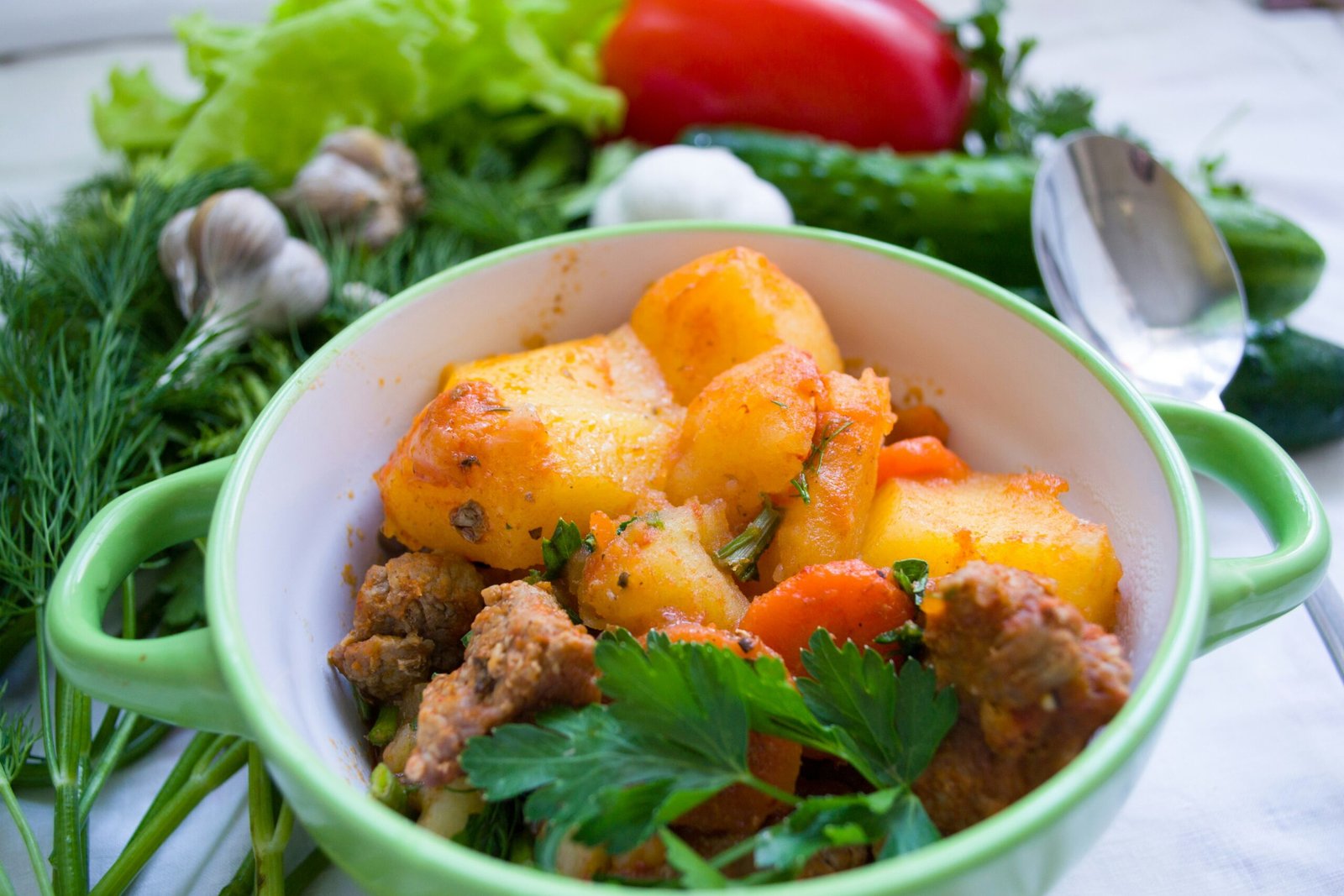Have you ever wondered what culinary treasures different cultures have to offer? Journeying through food can be as exhilarating and enlightening as physically traveling to new destinations. Each traditional dish is a testament to history, local produce, and the collective palate of that region. By savoring these iconic foods, you catch a glimpse into the heart and soul of diverse cultures.

1. Italy: The Land of Pasta and Passion
The Essence of Italian Cuisine
Italian cuisine is renowned worldwide for its simplicity, quality of ingredients, and the cultural significance each dish holds. It’s an intricate dance of flavors, textures, and stories that bring out the spirit of Italy.
Lasagna
Lasagna, originating from Naples, is a staple of traditional Italian cuisine. This layered pasta dish consists of alternating sheets of pasta, ragù (a meat-based sauce), béchamel sauce, and grated cheese—usually Parmigiano-Reggiano. It’s hearty, comforting, and a celebration of rich flavors that intermingle perfectly.
Risotto alla Milanese
Hailing from Milan, Risotto alla Milanese is a luxurious rice dish characterized by its vivid yellow hue from saffron. The risotto is cooked slowly with onions, white wine, broth, and often finished with Parmigiano-Reggiano. Each creamy bite is a taste of Italian elegance and culinary artistry.
2. Japan: Refined Simplicity in Every Bite
The Philosophy Behind Japanese Cuisine
Japanese cuisine is centered around a profound respect for the ingredients. Minimalistic preparation methods allow the natural flavors to shine, creating a harmonious and balanced dining experience.
Sushi
Sushi, perhaps the most famous Japanese dish globally, is a beautiful combination of vinegared rice, raw fish, and various other ingredients like seaweed, vegetables, and sometimes tropical fruits. Sushi is a testament to the Japanese art of precision and the philosophy of simplicity.
Ramen
Ramen, a beloved noodle soup dish, showcases the depth and versatility of Japanese cooking. With its savory broth, wheat noodles, and an assortment of toppings like sliced pork, scallions, and soft-boiled eggs, ramen is a comforting and deeply satisfying meal, adept at adapting local influences and seasonal specialties.
3. Mexico: A Fiesta of Flavors and Colors
The Vibrancy of Mexican Cuisine
Mexican food is a vibrant display of rich flavors, bright colors, and diverse ingredients. It reflects the history of Central America, merging indigenous traditions with Spanish influences.
Tacos
Tacos are one of the most iconic Mexican dishes, consisting of a folded or rolled soft or crispy tortilla filled with various ingredients like beef, chicken, pork, vegetables, and salsa. Tacos are versatile and can be as simple or elaborate as desired, making them a staple in Mexican culinary tradition.
Mole
Mole, a complex sauce with numerous variations, is a marvel of Mexican cooking. It combines an array of ingredients such as chili peppers, chocolate, nuts, and spices, creating a unique and deeply rich flavor profile. Mole is often served over chicken or turkey, symbolizing celebration and tradition in Mexican culture.
4. India: A Symphony of Spices and Textures
The Diversity of Indian Cuisine
Indian cuisine is a testament to the country’s vast diversity, encompassing a multitude of regional dishes characterized by their unique spice combinations, cooking techniques, and local ingredients.
Biryani
Biryani is a fragrant rice dish infused with aromatic spices, marinated meat (often chicken or mutton), and sometimes vegetables. Originating from the Mughal kitchens, it’s a luxurious meal that’s both hearty and aromatic, reflecting the rich history and culinary prowess of India.
Samosa
Samosas are deep-fried pastries filled with a spiced mixture of potatoes, peas, and sometimes meat. These triangular delights are popular street food and symbolize comfort and indulgence. They are often enjoyed with tangy tamarind chutney, creating an irresistible combination of flavors.
5. Thailand: The Perfect Balance of Flavor
The Harmony of Thai Cuisine
Thai cooking is all about balancing sweet, sour, salty, and spicy flavors to create harmonious and vibrant dishes. Thai food is both aromatic and visually appealing, making it a true delight for all senses.
Pad Thai
Pad Thai is a popular stir-fried noodle dish featuring rice noodles, tofu or shrimp, eggs, and crushed peanuts, all tossed in a tangy tamarind sauce. It’s a street food favorite that perfectly encapsulates the balance and complexity of Thai flavors.
Green Curry
Green curry, known for its creamy texture and vibrant color, is made from green curry paste, coconut milk, and a variety of vegetables and proteins like chicken or tofu. The interplay of the spicy curry paste and the creamy coconut milk creates an exciting and satisfying dish.
6. France: Elegance and Craftsmanship on a Plate
The Artistry of French Cuisine
French cuisine is synonymous with sophistication and meticulous technique. It emphasizes fresh ingredients, intricate preparation methods, and beautifully presented dishes.
Coq au Vin
Coq au Vin is a classic French dish that translates to “rooster in wine.” It involves braising chicken in red wine, bacon, mushrooms, and garlic. This rustic yet refined dish is a quintessential example of French culinary technique and tradition.
Crêpes
Crêpes are thin, delicate pancakes that can be filled with either sweet or savory ingredients. Originating from Brittany, they showcase the versatility and elegance of French cooking. Popular fillings include Nutella and banana for sweet crêpes, and ham and cheese for savory ones.

7. Ethiopia: A Unique Culinary Experience
The Richness of Ethiopian Cuisine
Ethiopian food is distinct and flavorful, emphasizing communal dining and bold spices. It’s known for its use of teff (a gluten-free ancient grain) to make injera, a sourdough flatbread that serves as both a plate and utensil.
Doro Wat
Doro Wat is a spicy chicken stew made with berbere (a blend of chili peppers, garlic, ginger, and various spices), onions, and hard-boiled eggs. Served on injera, it’s a deeply flavorful dish that reflects Ethiopia’s rich culinary traditions.
Tibs
Tibs are sautéed meat (often beef or lamb) dishes marinated in spices and herbs. They can be spicy or mild and are typically served with injera or other traditional sides. Tibs offer a hearty and satisfying taste of Ethiopian hospitality and culinary expertise.
8. Greece: A Mediterranean Delight
The Freshness of Greek Cuisine
Greek food emphasizes fresh, seasonal ingredients, healthful olive oil, and simple preparations that allow the natural flavors to shine. It reflects the Mediterranean lifestyle, focusing on communal meals and vibrant flavors.
Moussaka
Moussaka is a layered casserole made with eggplant, ground meat (often lamb), and béchamel sauce. Baked until golden and bubbly, it’s a hearty and comforting dish that beautifully showcases Greek ingredients and culinary traditions.
Souvlaki
Souvlaki consists of skewered and grilled pieces of meat, most commonly pork or chicken. It’s often served with pita bread, tomatoes, onions, and a dollop of tzatziki (a yogurt and cucumber sauce). This popular street food is a perfect example of the simplicity and flavor of Greek cuisine.

9. Morocco: A Fusion of Flavors and Aromas
The Exotic Charm of Moroccan Cuisine
Moroccan cuisine is a delightful fusion of Arab, Berber, and Mediterranean influences. It is known for its vibrant spices, slow-cooked stews, and the communal approach to dining.
Tagine
A tagine is a slow-cooked stew named after the earthenware pot it’s prepared in. Common ingredients include meat (like lamb or chicken), vegetables, dried fruits, and an array of spices. The slow cooking process melds the flavors beautifully, creating a rich and aromatic dish.
Couscous
Couscous is a fundamental part of Moroccan cuisine, made from steamed semolina grains. It is often served with vegetable or meat stews, and sometimes finished with sweet ingredients like raisins and nuts. This versatile dish reflects the adaptability and flavor depth of Moroccan cooking.
The world of traditional dishes is as vast as it is diverse. Each dish carries with it stories of its origin, the culture it represents, and sometimes even the family recipes handed down through generations. By exploring these traditional dishes from different cultures, you not only relish the flavors but also partake in the rich heritage and tradition they embody. So, the next time you find yourself craving a culinary adventure, consider the vibrant tapestry of global cuisine—each bite offers a new story, a new experience, and a deeper understanding of the world’s cultures.

